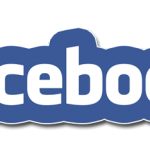Similarly, if a debtor cannot satisfy a creditor’s payment terms, be honest and professional. Informing them of the temporary difficulties and agreeing on a new payment plan can easily prevent legal issues in the future. The amount due to a business will fluctuate in tandem with the amount it owes, altering your balance sheet’s assets and liabilities. Based on this, Werner developed a new approach to macroeconomics, which integrates the nature of banks as money creators in macroeconomics – usually ignored in conventional macroeconomics. The business owner signs the contract for the card and proceeds to spend £2,000 on catering for their big blowout. At that point of spending, the business owner becomes a debtor, owing money to the bank for borrowing £2,000 on credit, plus interest.
What are other creditors?
If you need advice or services on any aspects of accounting, tax, business management or specific problems with debtors or creditors, our specialist team are ready to help. Please get in touch with us, or try our instant accounting quote tool. Many debtors — the primary source of revenue for debt-collection agencies — have at least temporarily been in a better position to pay their debts. It is common to drop the word ‘trade’ and simply refer to ACME as a debtor. For instance, let’s say that a banking institution provides debt financing to a company in need of capital. Effective accounts receivable management ensures that payments are received faster and helps prevent financial issues.
What is EBITDA? Definition, Formula, and Explanation
Particularly, in the case of small businesses as they affect assets and liabilities on your balance sheet. Debtors can also be someone who files a voluntary petition to declare bankruptcy. Since debtors are those who owe money to a company, the list of debtors includes all open invoices, or receivables from all customers.
- If you or your business has one or more debtors then, in accounting terms, makes you a creditor.
- This could be interest on bank loan repayments or credit card payments.
- Understanding the balance between creditors and debtors is vital for your business’s financial success.
- Based on this, Werner developed a new approach to macroeconomics, which integrates the nature of banks as money creators in macroeconomics – usually ignored in conventional macroeconomics.
- This is an amount that you’re liable for, and must pay as the result of a previous agreement.
Debtors in accounting explained
In this case, the asset-backed trust is a debt issuer of residential mortgage-backed securities. A country’s regulatory structure determines what qualifies as a security. For example, in North America, each security is uniquely identified by a CUSIP for trading and settlement purposes. In contrast, loans are not securities and do not have CUSIPs (or the equivalent).
This process often involves analyzing historical data, aging receivables, and industry trends. For instance, if a company historically experiences a 2% default rate, it might allocate a similar percentage as an allowance. Debtor days is the number of days a company takes to recover cash from its credit sales. Too debtor meaning in accounting many account receivables and longer debtor days will affect a company’s availability of cash. In such cases, it won’t be easy to manage the company’s working capital requirements. Customers who buy goods or services and pay on the spot aren’t debtors.
- Striking the sweet spot between these is where many businesses operate successfully.
- If for example, sales are made on credit terms to Customer A for 200 and Customer B for 400 the first entry would be to the sales day book to record the sales.
- This process often involves analyzing historical data, aging receivables, and industry trends.
- In other cases, the creditor may take the debtor to court in an attempt to have the debtor’s wages garnished or to secure another type of repayment order.
- Money owed by a debtor can be an account receivable in some cases if it’s for goods or services bought on credit or a note receivable if it’s a loan.
What happens if you have a lot of creditors?
This could be interest on bank loan repayments or credit card payments. Working capital comprises trade debtors (the amount owed to the company by clients), trade creditors (the amount owed by the company to suppliers) and stock. Debtors – A person or a legal body that owes money to a business is generally referred to as a debtor in the eyes of that business, as he or she owes the money. For a business, the amount to be received is usually a result of a loan provided, goods sold on credit, etc.
Likewise, getting this money into the business will help you pay your own creditors within their payment terms. It’s important that a business also looks at debtors as an aged debtor report. This gives you an opportunity to follow up on the late payment, so you have a better chance of recovering the money from your customer. If you owe money to a person or business for goods or services that they have provided, then they are a creditor. Looking at this from the other side, a person who owes money is a debtor.
In more serious circumstances, individuals and companies may go into bankruptcy. Understanding the balance between creditors and debtors is vital for your business’s financial success. At Accounts and Legal, we simplify complex financial terms, ensuring you have clear insights into your business’s cash flow. DSO provides insight into your customers’ average payment terms and helps determine whether your receivables management is effective. The lower your DSO, the faster you receive payments, resulting in a healthier cash flow. Calculating the total amount of accounts receivable is an essential part of receivables management.
When a lender makes a loan with no asset held as collateral, it does so only on the faith in the borrower’s ability and promise to repay the loan. The borrower is bound by a contractual agreement to repay the funds, and if there is a default, the lender can go to court to reclaim any money owed. You could end up having an outstanding balance if you took out a loan or line of credit, and the person or entity that owes the money may be known as the debtor. Trade debtors include customers who owe money for goods or services provided on credit.



